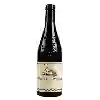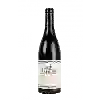The Château de Saint Cosme of Rhone Valley

The Château de Saint Cosme is one of the world's great estates. It offers 31 wines for sale in of Rhone Valley to come and discover on site or to buy online.
The Château de Saint Cosme is located in the magnificent Côtes du Rhône region in France, on the banks of the Rhône River. The Château itself is a magical place, situated on a steep hill overlooking the river and vineyard of the Saint Cosme family. Château de Saint Cosme has a very rich history, dating back for the first time to 1419. The vineyards of the Saint Cosme family have always been managed with the utmost care and characteristic respect of French winemaking seriousness. The Saint Cosme family has developed a very particular style by producing exquisite and aromatic wines. The winegrowers of the Saint Cosme family cultivate their vineyards according to organic and biodynamic farming methods to produce wines of the highest gastronomic quality. Their commitment to ecological and sustainability principles has emphasized the protection of soils and water sources as well as the use of natural products. Château de Saint Cosme produces a variety of wines, such as the "Château de Saint Cosme" range, the AOC Gigondas, the "Dievēa" cuvée, the Vinsobres, the "Les Deux Albion" range, and the "Grillade" wine. Each of these wines are free from herbicides and chemicals and offer a unique and unforgettable taste. The Château de Saint Cosme also offers guided tours of the vineyards, wine tastings, and SAINT COSME events in the summer. The Château also provides high-end accommodation to its clientele. To celebrate the excellence of their terroir and wines, they offer private packages and tours of the historic buildings. Château de Saint Cosme is a wonderful place that offers the quintessence of southern wines. Driven by the mission to provide the best wines from a well-maintained vineyard inhabited by a family for generations, the Château offers an incomparable journey to anyone wishing to discover its unique heritage.
























